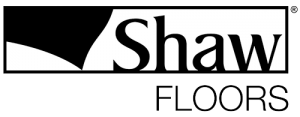Three steps for proper carpet care
Carpet cleaning is just like exercise! If you get into a routine and keep it up, you will see great results and feel better for it. And understanding the right way to clean carpet will help you save time by doing it correctly the first time – with products that do the job right from the start. Not only will the proper cleaning products help keep your carpet looking great, they can also help meet the warranty requirements of the carpet manufacturer.
Below are three simple steps to keeping your carpet clean and looking great:
- Vacuum at the right frequency with a good vacuum.
- Clean spots and spills quickly with products that do not damage the carpet or cause it to resoil more quickly.
- Professionally deep clean your carpets every 12 to 18 months to remove embedded dirt and grime.
Stop dirt at the door.
Preventing dirt and grime from getting on the carpet in the first place is a great way to start keeping it clean. The following helpful hints can stop dirt in its tracks.
Use mats — Outdoor and indoor mats or runners can reduce the amount of dirt that enters the house.
Take off your shoes — You can save wear and tear on carpet by asking everyone to take their shoes off before entering your home.
Change your air filters — Change air filters in your heating and air-conditioning systems as recommended by the manufacturer’s directions. The more dust and particles removed by the filter, the fewer that fall onto the carpet.
Spot Removal Steps
Act Quickly! Most carpet available today has been treated with a stain-resist treatment, so many spills can be removed if immediate action is taken. The longer the delay, the higher the probability of a spill becoming a permanent stain. Remember, staining is influenced by many factors, and no carpet is completely stain proof.
Blot liquids with a dry, white, absorbent cloth or white paper toweling (no printing).
Do not scrub the area! Scrubbing may cause pile distortion in the affected area. Continue to use a dry cloth or paper towels until the area is completely dry. For semi-solids, gently scrape up with a rounded spoon. Solids should be broken up and vacuumed until completely removed. If the spot can be identified, locate the substance in the spot removal computer and follow the directions carefully.
Pretest any spot removal agent in an inconspicuous area to be certain the solution will not damage the fiber or the dye. After applying several drops to the testing area, hold a white cloth on the wet area for 10 seconds. Examine the carpet and cloth for color transfer, color change, or damage to the carpet. If a change occurs, another cleaning solution should be selected.
Apply a small amount of the selected cleaning solution to a white cloth and work in gently.
Work from the edges of the spill to the center to prevent the spill from spreading. Do not scrub! Blot in order to absorb as much as possible, and repeat if necessary.
Continue using the first cleaning solution as long as there is a transfer of the spill to the cloth. It is not necessary to use all of the cleaning solutions if the first solution removes the spill.
Be patient! Complete removal of the spill may require repeating the same step several times. After the spill has been completely removed, rinse the affected area thoroughly with cold water, and blot with a dry cloth until all of the solution has been removed. Some cleaning solutions will cause rapid soiling if the solution is not completely removed. Apply a one-half inch layer of white paper towels to the affected area, and weigh down with a flat, heavy object. Continue to change paper towels as needed.
A dry, absorbent, cleaning compound may be used as a substitute to accelerate drying time.
Many fiber manufacturers provide a toll-free cleaning assistance and advice (consult your warranty).
Wool Wisdom
One of the most crucial areas of carpet maintenance is removal of spots and spills. Acting quickly when anything is dropped or spilled, and always having the necessary cleaning materials at hand are of the utmost importance.
Frequent vacuuming is a wool carpet’s best friend.
An upright vacuum with a beater bar/brush is the best type for cut pile carpet. A suction-only vacuum may be required for loop pile Berber carpets to prevent excessive fuzzing. The vacuum cleaner dust bag should be emptied when half full.
Exercise prevention maintenance by placing absorbent mats at the most frequently used entrances to your home. Change or launder when these mats become dirty. Filters in your heating and air conditioning systems should be changed regularly.
Periodically clean traffic lanes and the areas in front of frequently used chairs with an absorbent powder.
Keep absorbent cloth or paper towels and cleaning solutions on hand for quick response to spills and accidents.
DO NOT apply stain repellent treatments, which contain any silicone as they tend to accelerate carpet soiling. (Some carpet manufacturers do not accept responsibility for complaints where such treatments have been used.) When having your wool carpet professionally cleaned, use a “WoolCare Specialist” certified by Restoration Industry Association.
Basic Rug Care
Rugs deserve the same care as wall-to-wall carpet and, in some cases, require special attention.
Washing rugs — If your rug is small and the label says “machine washable,” shake the rug outside first and then put it in the washing machine at the recommended temperature. Use warm water (90 to 105 degrees) and a mild detergent. Tumble your rug dry at the lowest heat setting.
Beating larger rugs — If your larger rug is easy to pick up, shake it outside first; then put it over a clothesline and beat it. Next, take the rug inside and vacuum it. If the label says dry clean only, then roll it up and take it to a professional rug cleaner. Save time and aggravation by calling first to see if the cleaner does rug cleaning — many do not.
Vacuuming area rugs — Area rugs with fringe require special technique. Use gentle suction and start from the center of the carpet, vacuuming toward the fringe and being careful not to catch the strands in the beater bar. Lift the carpet edge to vacuum beneath the fringe.
Caring for Oriental, Turkish or Persian rugs — Clean imported rugs according to your carpet manufacturer’s specifications or bring in a professional cleaning service. Be gentle with fringe. For heirloom-type rugs, you need professionals.
Mohawk and Shaw Recommendations

Stain Removal
Treatment of the affected area should begin immediately upon discovery. The more time that elapses before treatment, the more difficult a stain will be to remove.
First scrape food spill gently with a spoon or dull knife – or a Mohawk Carpet Cleaning Key, removing as much solid materials as possible.
Apply Mohawk Floor Care Essentials Spot Remover or other low residue carpet spot remover that has obtained the Carpet and Rug Institute Seal of Approval to the stain.
Abnormally large or excessive stains may require hot water extraction method. Professional cleaning is recommended.
Important – Do not use any cleaner with a PH of 10 or higher. Always test cleaners on a small, non-visible area for any discoloration of the pile before using.
Mohawk recommends using the Mohawk Floor Care Essentials line of Cleaning products and tools for best overall results and product safety. These products are non-toxic, leave no soapy residue, and feature proprietary technology developed for the entire family of Mohawk flooring products.
Cleaning Recommendations
Even with regular vacuuming, soil particles and oily dirt will cling to the carpet fibers. With foot traffic these particles and oily dirt are driven deep into the carpet. We recommend professional hot water extraction every 12 to 18 months using cleaning products, equipment or systems that carry the Carpet & Rug Institute Seal of Approval. Periodic cleaning using the hot water extraction method performed by a certified carpet care professional, will refresh carpet appearance.
The most used areas, such as entrances, doorways, traffic lanes, and in front of chairs will collect dirt faster than other areas. Clean these areas as they begin to show soil. This will stop dirt from spreading and will extend the time between professional cleaning.

Protect your carpet color In addition to frequent vacuuming, it’s important to clean your carpet on a regular basis. Cleaning systems will remove the oily, sticky soil that vacuums can’t take out, and will help keep your carpet looking great over time.
Cleaning systems target the soils that result from cooking vapors, air pollution, and tracked-in dirt. The particles of oily soil deposited on carpet fibers can cause gradual but significant dulling of colors. The color isn’t lost, but is hidden under the film. If this type of soil is allowed to accumulate, it begins to attract and hold the dry soil.
Get on a cleaning schedule. If carpet is cleaned before it becomes too unsightly, the cleaning chore will be easier and more successful. Carpet in a typical household should be cleaned every 12 to 18 months, depending on the number of residents and amount of activity.
Choosing the proper cleaning system is important. Some systems may leave residues which accelerate re-soiling and defeats the whole purpose of cleaning.
Shaws choice: Hot water extraction Research indicates that the hot water extraction system provides the best capability for cleaning. This system is commonly referred to as “steam cleaning,” although no steam is actually generated. The process consists of applying a cleaning agent into the carpet pile and using water in the extractor to recover the used solution and soil. This can be done from a truck-mounted unit outside the home with only the hose and wand brought inside or by a portable system brought into the home.
Shaw warranties require that the homeowner be able to show proof of periodic cleaning by hot water extraction (commonly called “steam” cleaning) by a professional cleaning service or do-it-yourself system, using equipment that is certified under the Carpet and Rug Institute’s Seal of Approval program.
Professional advantages Professional carpet cleaners are a great choice for your floor. Their cleaning equipment has more extraction power than the rental units available to individuals, and the carpet should dry more quickly. True professionals also understand the equipment, know the proper cleaning agents for the situation at hand, and recognize the differences in fibers and carpet construction.
Locate a professional carpet cleaner Effective January 1, 2008, professional service must be performed by an IICRC (Institute of Inspection, Cleaning and Restoration Certification) certified firm.
